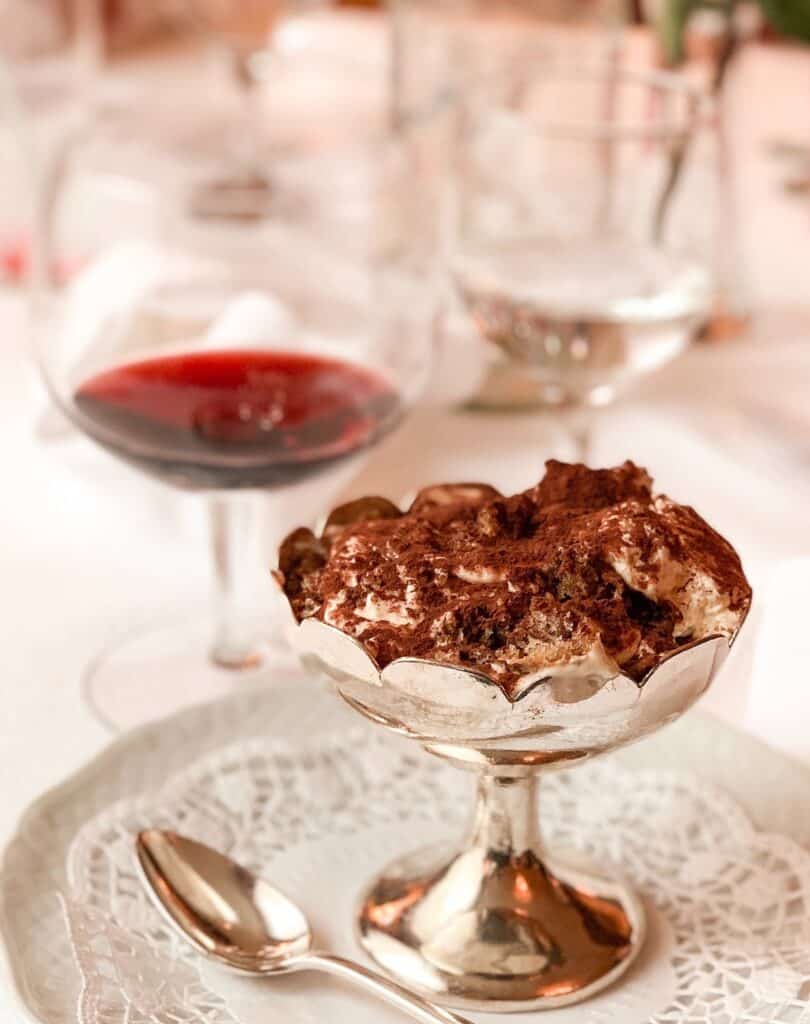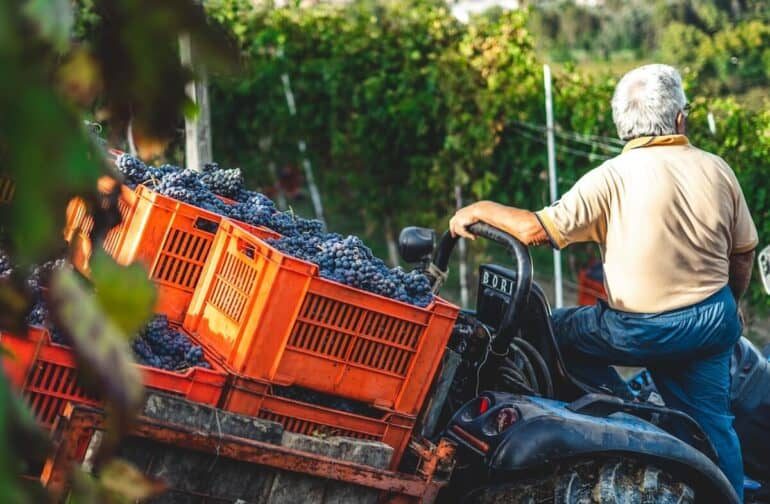Discover Italian wine regions through the major wine varieties
One of the best ways to get to know Italian wine is to learn the most important varieties and regions. Our guide will give you a good start.
According to the Rome-based Food and Agriculture Organization branch of the United Nations, Italy produces the greatest amount of wine in the world. On a year-to-year basis, this boast usually bounces back and forth between France and Spain. Still, Italy remains one of the world’s most important wine-producing countries. Italians drink an average of 42 liters of wine per capita per year. There is a lot of wine flowing here, and Italian wine is beloved the world over.
But since there is so much wine, choosing which one to savor can be a bit intimidating. Not only is Italy a colossal producer of wine; it also produces a huge diversity of wine that few wine-making countries can match. Every region in Italy makes wine, from the northern Alpine regions to Etna, an active volcano in Sicily. There are currently about 350 official wine grape varieties, and it is rumored that there are 2000 or more wine grapes in Italy. That’s a lot of grapes to get to know. To add insult to injury, there are 75 DOCG wines, 329 DOC wines, and many IGT wines.
It may seem impossible to wrap your head around Italian wine, but one of the best ways to get to know Italian wine is to learn the most important varieties and regions. The list below will give you a good start. Visit Winetourism.com to discover the Best Italian wine experiences.
Top Italian red wines

Nebbiolo
Nebbiolo makes one of the most important red wines in the world, Barolo. It’s a wine grape associated with Piedmont, in the north, used for Barolo and Barbaresco. It’s also found in Ghemme and Gattinara. Valtellina is a nebbiolo based wine made in Lombardy. Expect aromas of cherry, roses, leather, and even spices or tobacco leaf. Nebbiolo-based wines are wonderful in that they are a perfect balance of delicate and powerful. Styles will differ across regions, but expect high tannins and acidity. These wines are best served with dishes with a high fat content (and truffles). Great producers who make consistently beautiful wine include Ar.pe.pe in Valtellina, San Fereolo in Piedmont, Cascina Fornace from Piedmont. If you feel like splurging, try anything from the Rinaldi winery.
Sangiovese
Sangiovese is the most-planted variety in Italy. It reigns in Tuscany and to a lesser degree in Umbria and Lazio. It grows in every region except Valle d’Aosta and Trentino Alto Adige. It’s used to make some of the most popular red wines in Italy, including Chianti, Chianti Classico, Brunello, Rosso di Montepulciano, Vino Nobile di Montepulciano, and Morellino di Scansano, which are all based in Tuscany. However, you don’t have to leave the confines of Lazio to enjoy Sangiovese. It grows throughout the region. Sangiovese often has bold cherry aromas and can offer interesting balsamic, coffee, and black tea accents. It’s high in acidity, and medium-bodied with tight tannins, making these wines great with food. Producers to look for include Casale Azienda Agricola for their Chianti. Il Sanguineto in Montepulciano and La Villana in northern Lazio make a brilliant Sangiovese, and Podere Orto in Trevinano makes extraordinary red wines in Lazio right on the border with Umbria, and Tuscany. They also run a guest house. Sangiovese wines are incredibly food-friendly and can be paired with pizza and tomato-based pasta dishes as well as game and hard cheeses.
Aglianico
Aglianico has been called the “Nebbiolo of the South”, which doesn’t do it justice. It’s a standalone grape that grows mostly in Campania and Basilicata, although it also grows in Molise, Puglia, and Calabria. Aglianico makes pretty bold, full-bodied wines that are high in tannin and acidity and often great for aging. Expect aromas of plum, black pepper, and cherries. As they age, they can evolve into smoky, even meaty aromas. Check out Cantina Giardino from Campania, Carmerlengo in Basilicata, and I Cacciagalli in Campagna.
Cannonau
Cannonau is a rising star from Sardinia. Otherwise known as Grenache, Cannonau di Sardegna makes rustic herbal wines with jammy fruits and spices. If you like deeply tinted, intense red wines, give Cannonau a chance. Expect high alcohol, low tannin, and medium acidity. Pair with Sardinian pecorino cheese and roasted meats. Producers to search for include Tenute Dettori and Meigamma.
Montepulciano
Not to be confused with the town Montepulciano in Tuscany, Montepulciano is the name of a grape with origins in Abruzzo. Fifty percent of Montepulciano is cultivated in Abruzzo. A vast majority of it is used in co-op wines. Montepulciano can produce a wide variety of wines, from rustic wines served in a carafe to the elegant wines of Emidio Pepe. It’s an all-around easy-to-drink red wine with aromas of dark berries, dried kitchen herbs, spices, and plums. Depending on where it’s grown, it can have a range, but it’s usually medium-bodied, with easy tannins and acidity. It’s a great wine to serve with a charcuterie board. Top producers include Emidio Pepe and Valentini.
Primitivo
Primitivo hails from Puglia. You may know it by another name, Zinfandel. That’s right! California’s star grape is the same as Italy’s Primitivo, and it originates in Croatia, where it’s known as tribidrag. Until quite recently, it was used as a blending grape to add alcohol and body to wines throughout Italy. It was even sent to Piedmont to bulk up some Nebbiolo-based wines. However, because of Italy’s appellation system, it’s no longer used that way, at least officially. It’s one of the most widely planted varieties in Puglia. It’s used in Primitivo di Manduria and Primitivo del Salento. Both wines are a great value, perfect for people who love a simple wine with lots of fruitiness. They can be quite earthy and carry aromas of blackberry, figs, and blueberries. It pairs well with barbequed foods. Look for Cristiano Guttarolo and Masseria Torricella.
Top Italian white wines

Malvasia and Trebbiano blends
The two most historic white wines of Lazio, Frascati and Est! Est!! Est!!!, are Malvasia and Trebbiano blends. Other grapes are often added in small quantities, but these two grapes are the backbone of most Lazio white wine production. Trebbiano adds structure, while Malvasia adds elegance. In the hands of a good vintner, these wines offer a well-balanced refreshing acidity, medium body with notes of citrus, green apple, apricots, peaches, and wet stone. They are fun wines and the perfect accompaniment to Rome’s heavy pasta dishes such as carbonara and cacio e pepe. Dishes with Pecorino Romano pair perfectly with these wines. Producers that make great blends are Il Vinco from Montefiascone and Cantina Ribelà in Monte Porzio. Also look for Merumalia for wonderful Frascati DOCG.
Fiano
Fiano is a wonderfully rich wine from Campania. It’s not as sharply acidic as most other Italian whites, but it makes up for that with an incredible texture often described as waxy. It’s frequently labeled Fiano di Avellino. Expect aromas of melon, pears, citrus, resin, and nuts. It is usually medium-bodied, with medium acidity and alcohol. It pairs well with umami dishes and pasta with mushroom-based sauces. Look for Cantina Giardini, I Cacciagalli, and Tenuta Grillo.
Pinot Grigio
Pinot Grigio is the most well-known Italian white wine. There is a good reason for that: it grows across the northern regions of Italy from the Veneto to Alto Adige, Friuli Venezia Giulia, and Lombardy. And while it’s often a mass-produced wine, smaller producers offer excellent versions of it. The reason for its success is that it’s usually simple and refreshing. Pinot Grigios are light and floral, with aromas of citrus and stone fruit. In Friuli, they are often made by macerating the grapes with the skins, which turns the wines to a copper color. You’ll see Ramato on the bottle. These tend to be more complex and saline. Great producers include Franco Terpin in Friuli, Grawü and Foradori in Trentino-Alto Adige.
Garganega
You might not be familiar with the name of the grape, but it’s the main grape of one of Italy’s most important white wines, Soave, and the lesser-known Gambardella region. Expect oranges and mandarins, herbal notes, peaches, and melon aromas. These wines are dry, fresh, and tend to have a mineral, textured finish on the palate. They go well with fish dishes. Check out Volcanalia, Angiolino Maule, and Nevio Scala for fantastic examples of Garganega-based wines.
Wine Tasting with 6 different Italian fine wines, cured meats & cheeses
Indulge in the ultimate wine tasting experience in a boutique wine bar footsteps from Campo de’ Fiori. Listen as the sommelier takes you on a journey around Italy and its wine production through the tastings of 6 different wines, salami, cured meats, cheeses, bread and olives.
Best Italian sparkling wines

Franciacorta
Franciacorta is sometimes called Italy’s answer to Champagne. It’s one of the world’s great sparkling wines, made in the same way as Champagne, but labeled Metodo Classico. The wines from the Lombardy region are made with Chardonnay, Pinot Noir, and Pinot Blanc. They’re fresh wines with exemplary fruit aromas such as citrus, peach, and with toasted bread and nut aromas as well. Like its French sister wine, it tends toward freshness and a creamy mousse on the palate. Franciacorta is another wine that can be paired with almost anything, but it’s best with salty foods like fried fish, fried chicken, or anything fried in batter and appetizers. You’re going to open a bottle of Sparkling wine for a celebration, why not choose this Italian spumante? Two of the best producers are Nicola Gatta and 1701 Franciacorta.
Prosecco
Prosecco is a somewhat ubiquitous Italian sparkling wine. They are fun, easy to drink, and inexpensive. Unlike Franciacorta, which has a secondary in-bottle fermentation, Prosecco wines are made with the Glera grape using the tank method or Charmat method. This results in a fruity sparkling wine that is perfect to drink in the summer on a beautiful Roman terrace. A lot of them made by very industrial bottlers can be found at any grocery store in the world, while others are carefully made by small producers. The best wines come from Valdobbiadene and feature lovely aromas of pear, apple, and citrus fruits. They’re very fresh and fruity, easy to drink and go well with fried foods like supplì and lighter pizzas. Producers to look out for include Casa Coste Piane, Giovanni Frozza, Sfriso, and Carolina Gatti.
Lambrusco
Lambrusco is a sparkling red wine from the Emilia Romagna region. Its name means “wild grape” and it is a family of eight different grapes. It once had a bad reputation due to mass-produced, cloyingly sweet red sparkling products. But times have changed. Modern Lambruscos are fun and extremely food-friendly. Look for the word secco (meaning “dry”) on the label. Lambrusco di Sorbara tends to be delicate, floral, and lighter-hued, and Lambrusco Grasparossa are bold and deeply tinted. You can pair these with anything from pizza to fish to potato chips. Two great producers are Vittorio Graziano and Camillo Donati.
INSPIRATION
Rome’s Wine Bar Guide
best Italian Sweet wines

Marsala
Marsala is fortified wine made in Western Sicily, they are rich wines that have suffered a bad reputation for decades, which is why you will often hear people say they use Marsala as a cooking wine. Like many Italian wines, there are dedicated producers who are working hard to salvage the reputation of these wines, and it is now quite easy to find high quality bottles. There is a tier system that is complex that signifies age and sweetness. These luscious wines often have stewed fruit aromas, sweet spices, dried figs and dates, and cigar box. They are very special wines that can be aged for years. One of the best producers is Marco de Bartoli.




